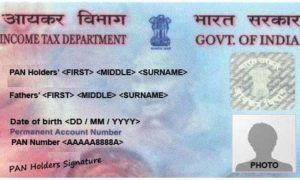The prevailing Covid-19 crisis has altered our spending patterns. While our expenses towards daily commutes, restaurants and movie theatres have reduced due to social restrictions, many are spending more on groceries and utilities these days. In such a situation, your credit card becomes much more than just another payment tool. It not only enables digital and contactless transactions required in social distancing but its smart usage can also maximise the value of your day-to-day spends provided you clear your dues in full on time. Here are a few smart tips to make the most of your credit card.
Optimise your card spends to earn maximum benefits
Each credit card has benefits. Often, their users don’t pay heed to them. But if you dig deep, you’re likely to be able to devise ways to optimise your card spends during Covid times to save more. To begin with, a card that incentivises online, grocery and utility spending should be highly beneficial in the current times. For example, a user who spends Rs 20,000 per month through a particular credit card from a public sector bank can enjoy benefits worth Rs 7,501 in the first year of usage. This card offers 10x reward points on partnering sites including Amazon, Urban Company, Netmeds, etc., and 5x points on all other online sites, and the user would earn those benefits by ensuring half of her monthly transactions are made on the partnering sites.
Similarly, a user who spends Rs 20,000 per month through a lifetime free card from a private bank can enjoy annual benefits worth at least Rs 14,550, including a free Priority Pass membership for two worth Rs 9,900 that could make their future travels a lot more convenient.
Consider additional deals
Credit cards often provide promotional deals and privileges in addition to core benefits like cashback and reward points, further boosting your savings. For example, a cashback card from a prominent foreign bank offers up to 10x reward points for online, department and apparel store purchases, is also currently offering 10% cashback up to Rs 500 on transactions above Rs 1,500 on Jio Mart, and a flat 40% off on Edureka certification courses among many other promotional deals.
Paying the annual fee
While a zero annual fee card would normally be favoured, the fact remains that cards charging a fee provide better rewards than their lifetime free counterparts. So, before rejecting a card due to its fee, check what you’re getting in return. These could be joining gifts, bonus reward points, etc. A cost-benefit analysis might reveal these joining perks help you save more. For example, paying a Rs 750 annual fee might give you 2500 bonus reward points (redeemed for a Rs 1,250 worth gift) which would otherwise require card spends over Rs 50,000 at the rate of four points every `100 spent. However, if you feel the annual fee or the spending target required for a fee waiver is steep, take a free card.
Factor in the reward riders
While understanding a credit card’s benefits, note its applicable riders, if any, such as reward points and cashback caps, points validity and redemption rate, partnering merchants, etc. For example, your card gives 5% cashback on grocery spends but capped at Rs 200 per month. If your monthly groceries bill is Rs 10,000, you should have a cashback of Rs 500 but the cap allows you only Rs 200. Or let’s say you’re an online shopper and your card gives 10x points for online spends but only on partnering websites. If you don’t shop on those sites, you’ll miss the benefits. Hence knowing the riders helps assess a card’s benefits.
It’s important to use a credit card whose benefits are aligned with your unique spending patterns which are likely to have altered due to the Covid-19 crisis.





































